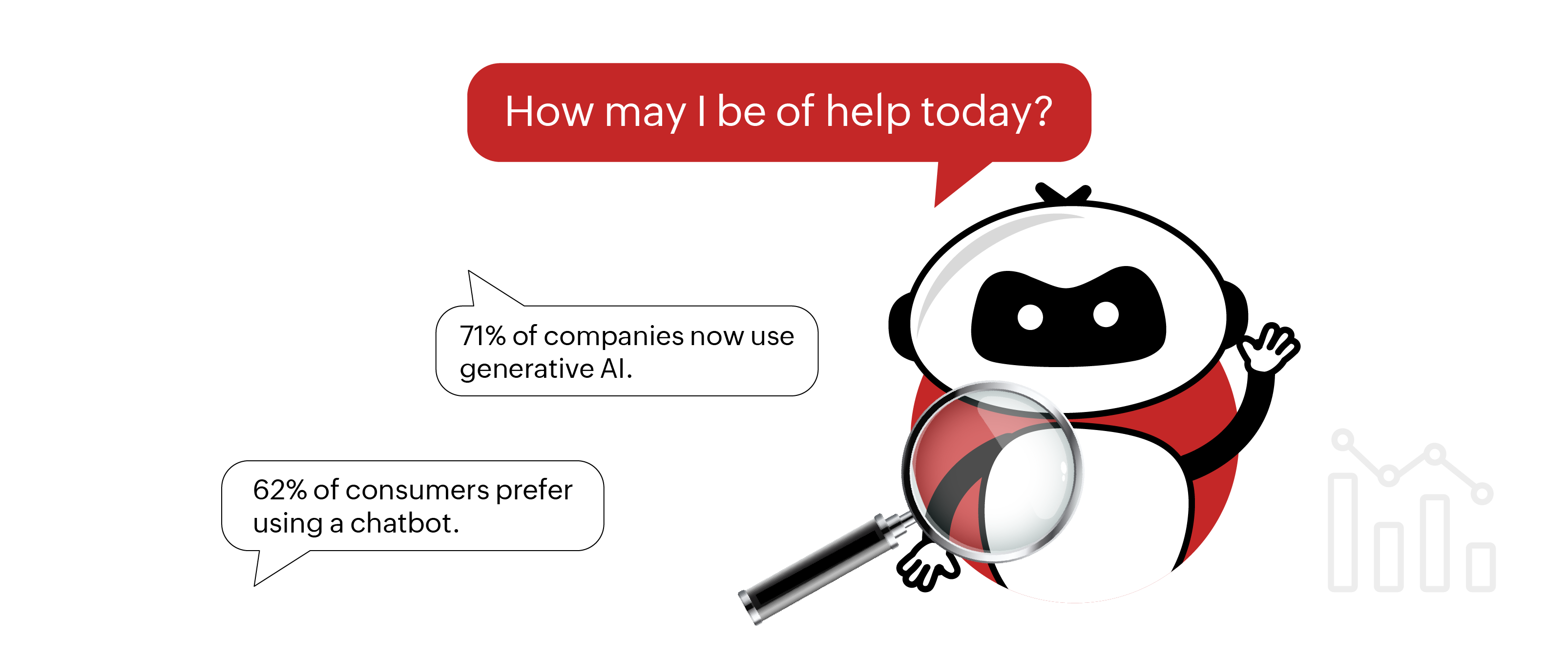FAQs about chatbots
How widely are chatbots used in 2026?
Chatbots are everywhere on the business side – over half of organizations now use them to support customers, according to Gartner. But from the customer’s perspective, adoption is still catching up. Only about 8% of people say they used a chatbot in their most recent support experience, and just a quarter of those would do it again. So while companies are all-in, users are still warming up to the idea.
Do chatbots save companies money?
Yes, chatbots can significantly reduce support costs. For example, IBM estimates that chatbots can cut customer service costs by up to 30%xii by handling routine queries. In one study, companies using chatbots reported a cost of just $0.70 per interaction (compared to much higher costs for phone support). These savings can easily offset the initial investment in chatbot software and AI.
Will chatbots replace human agents?
No, chatbots won't entirely replace human agents. Chatbots are best at simple, repetitive tasks. They can quickly answer common FAQs (like order status or account info) and handle high volumes without waiting. Humans are still needed for complex or emotional issues. Many companies use chatbots for first-level support and intelligently route customers who need advanced help or personalized support to the right human agent.
What trends will shape chatbots beyond 2026?
Several emerging trends will boost chatbot capabilities. Generative AI (like GPT) will make bots better at understanding intent and producing human-like responses. Voice assistants and multimedia chats will become more common (e.g. voice bots on phones or kiosks). Experts anticipate that as AI technologies (LLMs, voice recognition, emotional AI) advance, chatbots will become smarter and more context-aware.
Where can I learn more or get started with chatbots?
A great way to start is by trying a chatbot platform. For example, at Zoho SalesIQ, we offer an AI chatbot builder (Zobot) and a free 15-day trial. You can experiment with creating bots for your website with no credit card required. Additionally, Zoho’s blog and documentation provide guides on best practices for chatbots and AI. As a first step, read up on chatbot use cases in your industry and consider how a bot could help automate tasks like lead qualification or customer support. With the statistics above, it’s clear that chatbots are now a mainstream tool – the sooner you start, the sooner you’ll capture their benefits.
